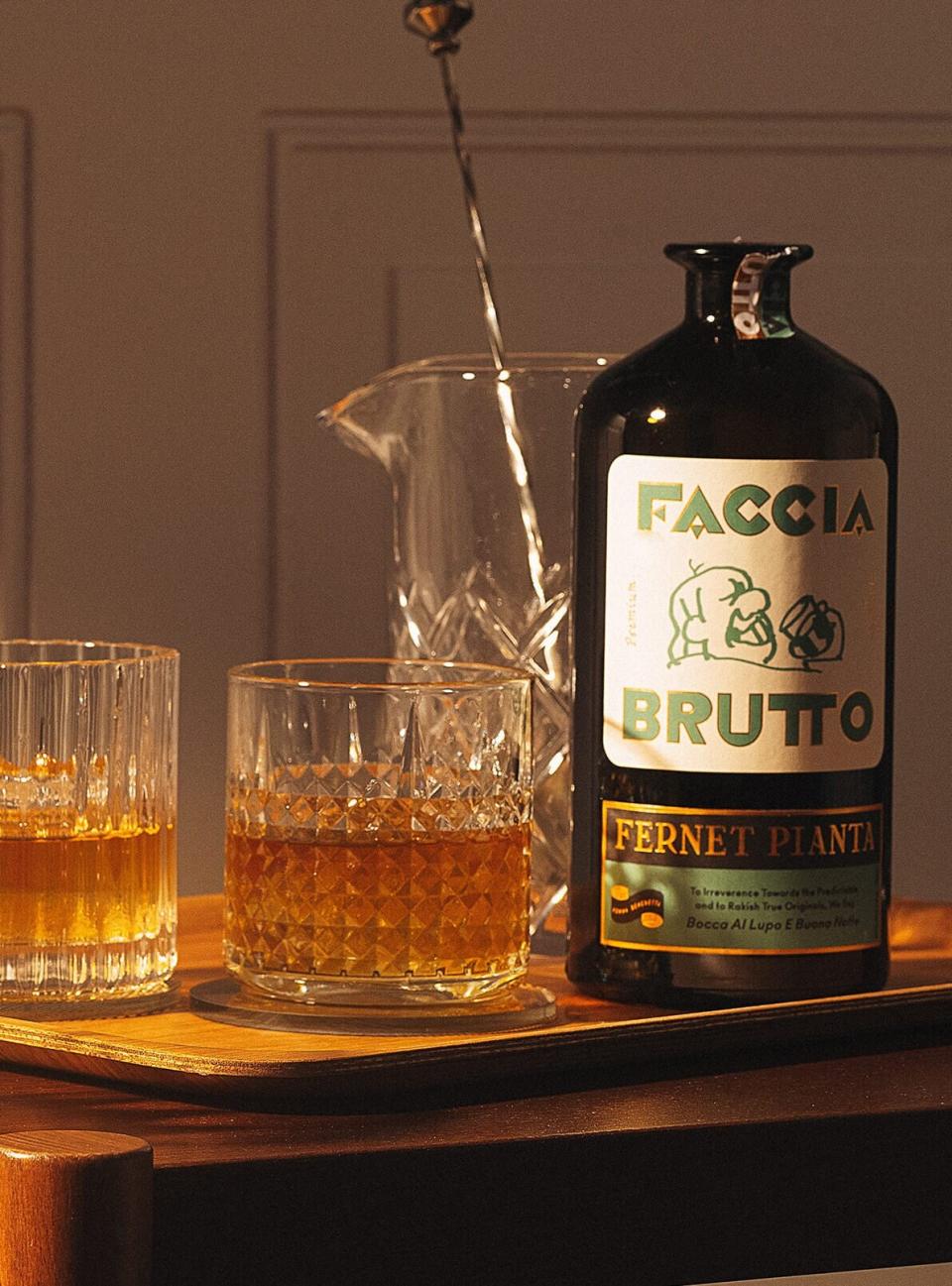What Is Amaro? Learn All About These Delicious Herbal Liqueurs
Amaro means bitter in Italian, and bitterness is definitely what we'd consider a grown-up taste. When we're young we're pre-disposed to sweet, and we can't bear bitterness on our tongues. However, most of us grow to appreciate bitter things gradually, moving up from dark chocolate and coffee to radicchio and broccoli raab as we mature.

Courtesy of Faccia Brutto
An amaro is also the name for Italian liqueur—bitter, of course—that's traditionally sipped after dinner as a digestivo. Although Italy is not the only country in Europe to develop this beloved custom, our fascination with Italian food and drink is what has shone the light on it for Americans. Traditionalists might be horrified by the way we group together amari (plural) and drinks in the aperitivi category—vermouths and drinks such as Campari and Aperol, which though bitter, are meant to be enjoyed before dinner as spritzes and in cocktails. Of course, we all bend the rules, mixing drinks and spritzes with amari if we feel like it. One of the things we love about amari is that they're lower in alcohol than most spirits, so they make for light drinking whether before or after a meal. But note that an amaro differs from cocktail bitters such as Peychaud's or Fee Brothers, which are so strong they must only be used in drops and dashes.
We especially enjoy the brilliant way amari bring bitter, sweet, and herbal flavors into play. Classic favorites are often dark and nuanced, with sweet, spiced complexity, such as Sicilian Averna ($39.99, wine.com) with enchanting notes of orange peel, Lucano from Basilicata ($30.99, wine.com), and dark-fruited Ramazzatto ($29.99, wine.com), which has been made in Milan since 1815. For beginners, Montenegro, Amaro Nonino, and Cynar are a great place to start. Although they're all very different, they are light and easy to enjoy. Montenegro ($29.97, wine.com) with caramel nuances offset by orange and floral notes, is often considered a gateway amaro. Amaro Nonino (from $24.97, drizly.com) is made with grappa and has a subtle sweetness that makes it deliciously sippable. Cynar (from $28.24, drizly.com) is a light-bodied, artichoke-based amaro, and it makes a great spritz. Produced since 1952, Cynar is one of the youngest of the big Italian labels. There are others in the artichoke subcategory, such as Cardamaro (from $23.99, drizly.com) made from cardoons, and a newer release from Washington D.C.-based Don Ciccio e Figli called, fittingly, Carciofo c3 (from $33.99, drizly.com), which uses three types of artichokes (carciofi in Italian) and cardoons, along with grapefruit peel. The company, like other small producers, also makes other amari and aperitivi.
Related: The Delightful Tradition of the Aperitif
The Interesting History
The craft of making amaro began in monasteries in the 15th or 16th century, based on healing traditions of herbalism and became a popular bottle business in the 1800s. Confusingly, it's a wide, loosely defined category, which includes familiar names and many obscure ones. All are liqueurs made by infusing a base of spirits or wine with botanical ingredients; these run a seemingly endless gamut, from cardamom, clove, and chamomile to wormwood and kola nut. The recipes are regionally influenced and carefully guarded. The proprietary blends of herbs, flowers, spices, roots, and barks often include as many as 30 items, always with something bitter to add that essential backbone. Then they're mellowed in barrels for months and sweetened for balance. There are a few subcategories or styles, including rabarbero, amari made with the Asian rhubarb root; Alpine amari like Braulio ($54.99, astorwines.com) which use a profusion of high-altitude botanicals and tend to have that fresh, piney note; and fernet, which are similarly bracing, with a more pronounced eucalyptus or mentholated character. The most famous one is Fernet-Branca ($29.99, wine.com), touted by indulgent eaters as a restorative with great digestive properties.
Made in America
Small producers in the U.S. have been trying their hand at blending complex fernets: Montana-based Gulch Distillers uses mountain herbs and Montana grain for their Fernet Burrone (currently only available from the distillery), and New York's Faccia Brutto, which was started by a restaurant chef with the palate and experience to make his own award-winning fernet, called Fernet Pianta (from $44.99, drizly.com). There are several small distilleries alone in Brooklyn all making liqueurs with carefully sourced, often foraged, and blended ingredients: the dark and beautifully complex Forthave Marseille (from $29.99, drizly.com), whose hand-drawn label eerily references the medieval plague. (Forthave also make limited editions, single-batch amari for the discerning palate, aperitivi, and nocino). The aforementioned Faccia Brutto also make a lively, gentian-infused Amaro Gorini (from $45.99, drizly.com) is named after the owner's grandmother, and St. Agrestis, whose amaro (from $42.89, drizly.com) has alluring hints of wintergreen and sarsaparilla. Their retro, colorful bottles conjure up a fun night of sipping and playing cards.
The love of a good amaro among those in the know—the bartenders, Italophiles, and chefs—has emerged as a full-blown trend wherever the well-traveled and the curious imbibe. It's a beguiling group of drinks to explore, so dive in. Respect the old-world amari and open your eyes and palate to the ones being made by a new generation of passionate distillers.

